The Pancreas

Your pancreas is an organ that sits just behind the stomach whose main purpose is to filter bilirubin, and release enzymes that aid digestion and produce hormones that help manage your blood sugar.
Pancreatic cancer begins in the tissue of the pancreas, most commonly in the cells that line the ducts that carry digestive enzymes out.
Statistics
Hypoglycemia

Symptoms of low blood sugar, like sweating, shakiness, dizziness, or confusion, can sometimes occur in cases of insulin-producing neuroendocrine tumors (insulinomas). These tumors cause the pancreas to release too much insulin, leading to hypoglycemia.
If you’re experiencing these symptoms regularly, especially without a clear trigger like skipping meals, it’s important to seek medical advice. Low blood sugar can be dangerous, and in rare cases, it may point to an underlying issue like pancreatic cancer.
Skin Rash or Flushing

Skin changes, like rashes or flushing, can sometimes be associated with pancreatic cancer, particularly in cases of neuroendocrine tumors. These tumors can produce excess hormones, leading to visible changes in the skin.
If you notice persistent rashes or episodes of skin flushing that don’t seem to have an obvious cause, it’s worth mentioning to your doctor. While these symptoms are rare, they can be an early indicator of certain types of pancreatic cancer.
Early Satiety

Feeling full after just a few bites of food can be a sign of early satiety. This happens when a tumor presses on the stomach or slows digestion, making it hard to eat a normal amount of food.
If you notice that you’re losing your appetite or can’t finish meals like you used to, it’s worth paying attention. While it might seem like a small inconvenience, this could be an early warning sign of pancreatic cancer and should be checked out by a healthcare professional.
Abdominal Ascites

A swollen or bloated abdomen can be more than just a sign of overeating. In some cases, it’s caused by a buildup of fluid in the abdomen, known as ascites, which can be linked to pancreatic cancer.
If you feel unusually full or notice visible swelling in your stomach that doesn’t go away, it’s worth getting checked out. This symptom can make everyday activities uncomfortable and may be an early clue that something isn’t right.
Muscle Cramps or Weakness

Muscle cramps or a general feeling of weakness can occasionally be linked to pancreatic cancer. These symptoms may occur due to metabolic or electrolyte imbalances caused by the disease, or in some cases, neuroendocrine tumors.
If you’re noticing frequent cramps or feeling unusually weak without a clear cause, it’s a good idea to get it checked out. While these symptoms might seem minor, they could be part of a bigger picture.
Depression or Anxiety Without Obvious Cause

Feeling persistently down or anxious without a clear reason can sometimes be an early sign of pancreatic cancer. While mood changes are common and can have many causes, they may also be linked to the body’s response to the disease or changes in hormone levels.
If you’re experiencing unexplained depression or anxiety, especially alongside other physical symptoms, it’s worth discussing with a healthcare provider. Mental health is important, and these changes could be an early clue that something more is going on.
Jaundice
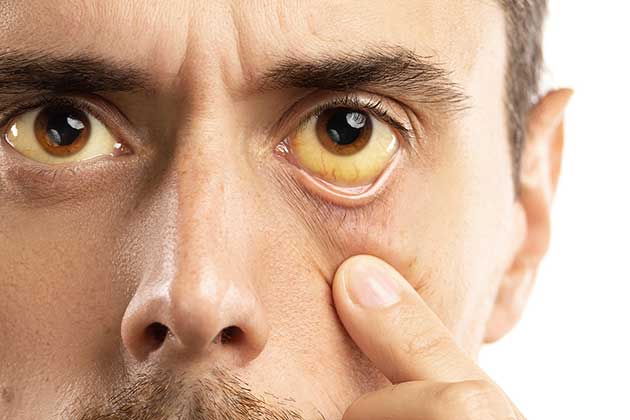
One of the most common, early symptoms of pancreatic cancer, jaundice is a yellowing of the eyes and skin. This occurs because as the cancer spreads, it can block the duct that releases bile into the intestines and out through your stool.
This results in a build-up of bilirubin in the blood that turns the eyes and skin yellow.
Pruritus
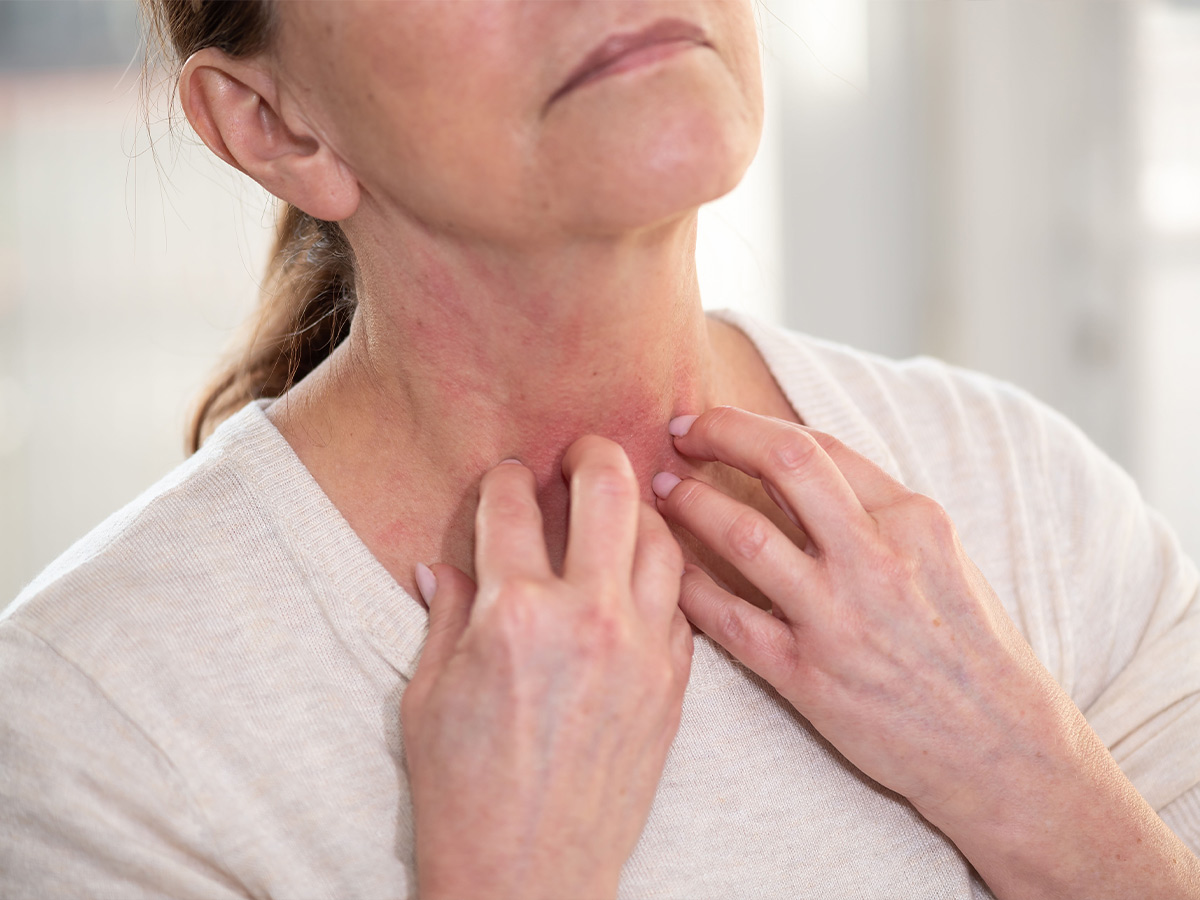
Itchy skin might seem like a minor annoyance, but it can sometimes be an early sign of pancreatic cancer. This is often linked to jaundice, which occurs when a tumor blocks the bile duct, causing a buildup of bile in the bloodstream.
If you’re experiencing persistent itching, especially without a clear cause like a rash or allergy, it’s a good idea to mention it to your doctor. It might seem unrelated, but it could be an important clue.
Changes in Stool Character

Changes in your bowel habits, like diarrhea, constipation, or greasy, foul-smelling stools, can sometimes point to pancreatic cancer. These changes happen when the pancreas isn’t producing enough enzymes to properly digest food, especially fats.
If you notice ongoing issues with your stool—whether it’s unusually loose, oily, or difficult to pass—it’s a good idea to bring it up with your doctor. While these symptoms can be caused by many things, persistent changes in digestion shouldn’t be ignored.
Persistent Indigestion

Heartburn and indigestion are common, but if they stick around and don’t improve with usual treatments, it could be a sign of something more serious. Ongoing discomfort in the upper stomach, like burning or acid reflux, might be an early symptom of pancreatic cancer.
If you find yourself constantly reaching for antacids or feeling like your stomach is unsettled no matter what you eat, it’s important to talk to a doctor. Persistent indigestion isn’t always just about food—it could be your body signaling a deeper issue.
Fever & Chills

Unexplained fevers, chills, or general signs of inflammation can sometimes be early symptoms of pancreatic cancer. These may occur due to inflammation in the body or secondary infections caused by the disease.
If you’re experiencing periodic fevers or chills without an obvious reason, it’s worth noting. While these symptoms are common with many illnesses, they shouldn’t be overlooked if they persist or occur alongside other unusual changes.
Belly or Back Pain
Weight Loss and Poor Appetite

Pancreatic cancer can cause many digestive issues. However, any type of cancer can result in unexpected or explained weight loss and loss of appetite.
Any type of cancer induced weight loss is a problem because it affects the way the body burns calories and uses proteins by burning more calories than normal, breaking down muscle, and decreasing the appetite.
Nausea and Vomiting
Gallbladder or Liver Enlargement

Pancreatic cancer can cause the liver to become enlarged, especially if the cancer has metastasized. The gallbladder is usually the more evident sign of pancreatic cancer.
If enlarged, it can be felt during an exam and seen in imaging studies. When the cancer blocks a bile duct, the fluid can become stuck in the gallbladder, causing it to enlarge.
Blood Clots

All cancer patients are more susceptible to blood clots forming during treatments. However, pancreatic cancer patients are at an even higher risk of forming Cancer Associated Thrombosis— a blood clot in the veins.
The risk is higher due to the cancer, the cancer treatments, and moving around less after a procedure. The signs of a deep vein thrombosis are swelling, redness, and leg pain.
Sudden On-Set Diabetes
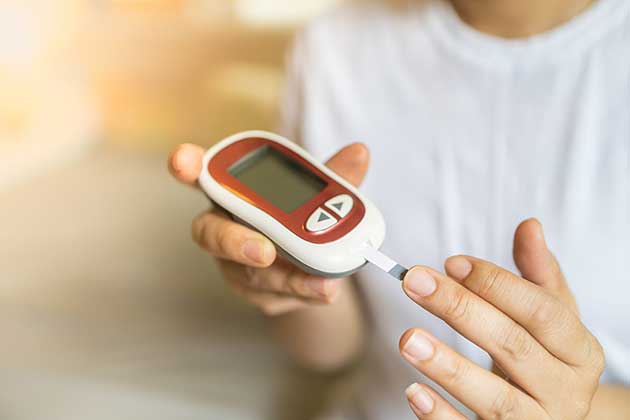
As we discussed earlier, the pancreas produces a hormone called insulin, whose responsibility it is to regulate a body’s blood sugar levels. It is thought by many that pancreatic cancer can cause the cells in the body to become resistant to insulin.
If you already have controlled diabetes and it becomes uncontrolled for no reason that you’re aware of, this can also be an early symptom.
Dark Urine
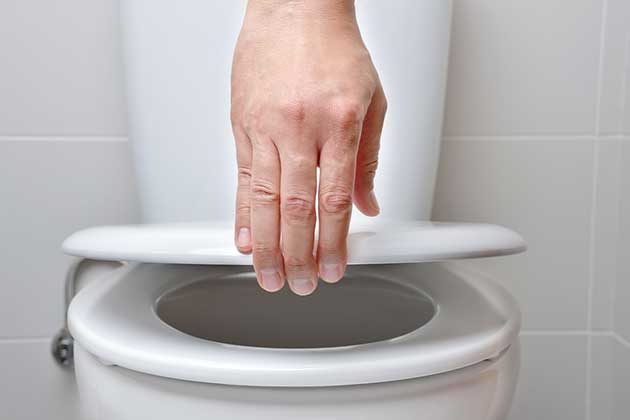
Dark urine is also a sign of jaundice. Bile that is normally stored in the gallbladder to travel through the intestines to be removed from the body by stool can be blocked by a tumor.
When the bile cannot be removed, too much builds up in the body and the excess can get into the urine, staining it brown.
Skin Issues
Bloating

Bloating is having the sense of being full even if you’ve barely eaten anything. It can cause an early sense of being full with meals or it can just be an uncomfortable swelling in the abdomen.
A common condition in pancreatic patients, ascites, is extra fluid buildup in the abdomen. It can cause the belly to swell or stretch out. This is especially common in patients whose cancer has spread.
Risk Factors

Just because you have a risk factor, or even several of them at once does not mean you have or will get cancer. Some people with few or no risk factors at all can also develop pancreatic cancer just as some people with all the risk factors will not develop it at all.
The risk factors for pancreatic cancer are smoking, diabetes, obesity, inflammation of the pancreas, a family history of pancreatic cancer, and ethnicity. According to research, African Americans have a slightly higher risk of developing pancreatic cancer than Hispanics, Asians, and Caucasians.
Testing for Pancreatic Cancer
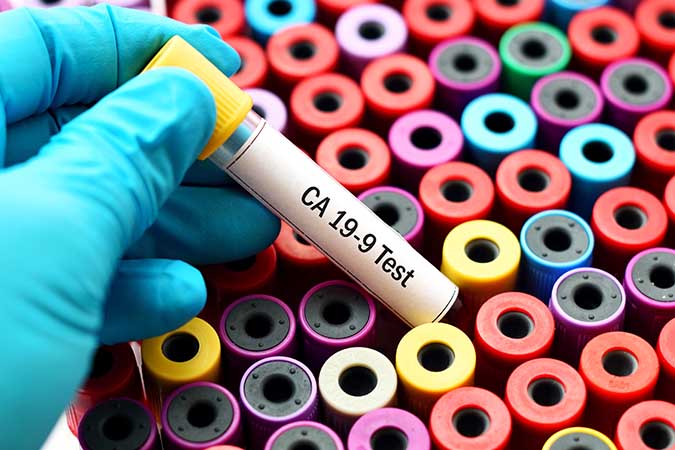
If a person has signs or symptoms that might be caused by pancreatic cancer, there are several exams and tests that doctors will do to determine if you have it. During the physical exam, their doctor will quiz them about your medical history as well as your family’s.
The doctor will then examine the patient, looking for jaundice in the eyes and skin, and checking to see if the gallbladder or liver are swollen. If anything seems abnormal, the doctor will then order further tests such as blood tests, imaging tests, and possibly even a biopsy of the pancreas.
Treatments

Once a patient is diagnosed with pancreatic cancer, the next step is to determine what stage the cancer is in in order to discuss the patient’s treatment options. Treatments could consist of surgery, ablation or embolization, radiation therapy, chemotherapy, and/or pain control options.
Available options for treatment of the cancer depend heavily on whichever stage the cancer is in at the time of diagnosis, the patient’s age and expected life span, and any other serious conditions the patient may have.
 Author
Chrissy Jones
Last Updated: October 02, 2025
Author
Chrissy Jones
Last Updated: October 02, 2025



